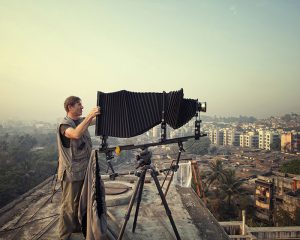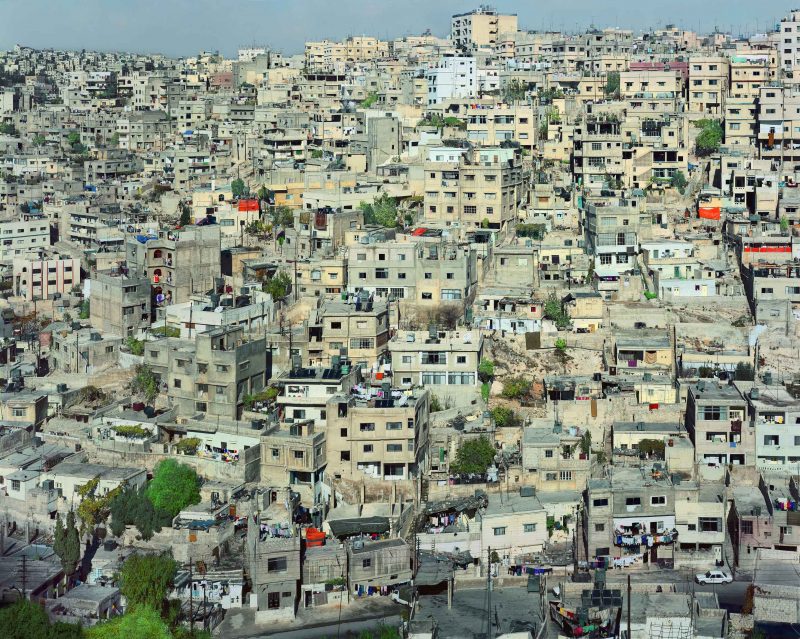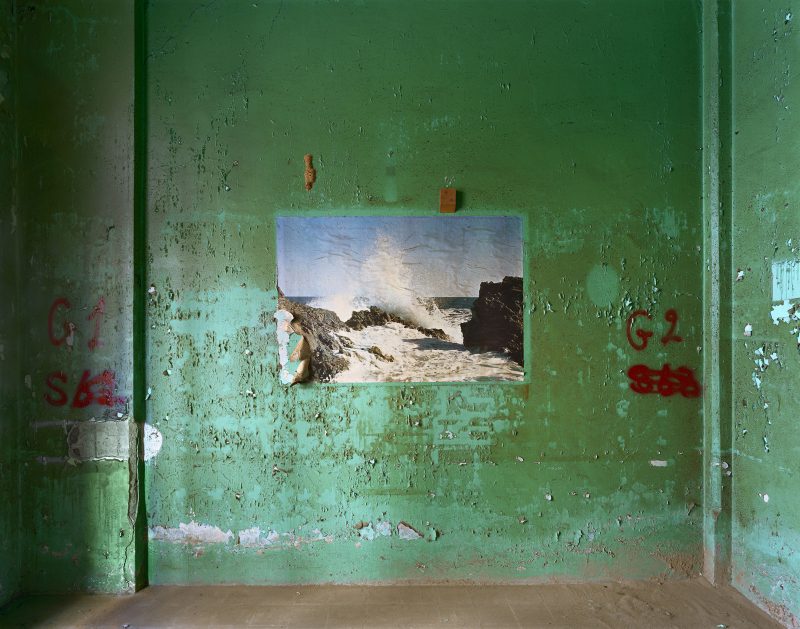ART CITIES:Cologne,Exteriors and Interiors-Robert Polidori
“I‘m interested in the traces left by the passage of time in a room, a building or a city“-Robert Polidori
In Exteriors and Interiors, images from his series Hotel Petra and Dendritic Cities are shown for the first time, works that the photographer produced between 2008 and 2011. With the snap of the camera shutter, time and its effects are encompassed; the state captured by Polidori becomes an historical manifestation. Polidori’s views of exterior and interior spaces in their urban contexts are like portraits that make the passage of time visible in present-day images.
By Dimitris Lempesis
Photo: Karsten Greve Galerie Archive
 “Hotel Petra” series is composed of interior views of a building that has been shaped by acts of violence and by natural processes of decay. While in Beirut, Polidori sought out the once-dignified Hotel Petra, which had remained sealed off for nearly 23 years following the destruction of the Lebanese civil war. The walls are covered with numerous coats of paint that, over time, have flaked away and faded to the point that the underlying colours reveal themselves in changing tones and intensities. Yet Polidori emphasizes not only the painterly quality of these walls, but also the historical aspect that inhabits this “Natural painting”. He describes the abstract forms that arise due solely due to the passage of time as “Τhe archaeology of painting”. The artist also pursues these traces in the panoramas of his series entitled “Dendritic Cities”. Here he confronts the phenomenon of the rampant growth of so-called cités sauvages, whose uncontrolled spread around the edges of major cities follows no principle of urban planning, but is rather a direct result of socioeconomic conditions. Whether it is a slum in India or a Favela in Brazil, Polidori is always fascinated by such cities, which “Spring up suddenly and disappear again after 50 years. They are temporary structures that grow up out of necessity”. One of these scenarios of change in which a temporal development makes itself noticeable is the Indian slum of Dharavi. Originally located on the outskirts of India’s megalopolis Mumbai, it quickly became engulfed so that today (unusually for a slum) it lies right in the middle of the city. In order to cope with the acute lack of space, old structures are torn down and new, improvised living spaces are built for the constant influx of people. Similar to the layers of paint on the wand of the Hotel Petra, the shacks are piled one on top of the other, surrounded by a confusing mass of one- and two-store buildings. The quickly changing appearance of the city is also portrayed in the views of Amman, Jordan. Nearly all of the buildings pictured were built after 1991 when, because of the conflict in Iraq and the expulsion of Palestinians from Kuwait, the city received a wave of refugees, making the construction of emergency housing a necessity. In contrast to his interiors, which are shot with a long exposure, these images are composed of many individual short-exposure photographs of a preexistent situation, which he pieces together into a multilayer composition whose irregular contour can be viewed as a formal equivalent of the unregulated, unrestrained urban sprawl.
“Hotel Petra” series is composed of interior views of a building that has been shaped by acts of violence and by natural processes of decay. While in Beirut, Polidori sought out the once-dignified Hotel Petra, which had remained sealed off for nearly 23 years following the destruction of the Lebanese civil war. The walls are covered with numerous coats of paint that, over time, have flaked away and faded to the point that the underlying colours reveal themselves in changing tones and intensities. Yet Polidori emphasizes not only the painterly quality of these walls, but also the historical aspect that inhabits this “Natural painting”. He describes the abstract forms that arise due solely due to the passage of time as “Τhe archaeology of painting”. The artist also pursues these traces in the panoramas of his series entitled “Dendritic Cities”. Here he confronts the phenomenon of the rampant growth of so-called cités sauvages, whose uncontrolled spread around the edges of major cities follows no principle of urban planning, but is rather a direct result of socioeconomic conditions. Whether it is a slum in India or a Favela in Brazil, Polidori is always fascinated by such cities, which “Spring up suddenly and disappear again after 50 years. They are temporary structures that grow up out of necessity”. One of these scenarios of change in which a temporal development makes itself noticeable is the Indian slum of Dharavi. Originally located on the outskirts of India’s megalopolis Mumbai, it quickly became engulfed so that today (unusually for a slum) it lies right in the middle of the city. In order to cope with the acute lack of space, old structures are torn down and new, improvised living spaces are built for the constant influx of people. Similar to the layers of paint on the wand of the Hotel Petra, the shacks are piled one on top of the other, surrounded by a confusing mass of one- and two-store buildings. The quickly changing appearance of the city is also portrayed in the views of Amman, Jordan. Nearly all of the buildings pictured were built after 1991 when, because of the conflict in Iraq and the expulsion of Palestinians from Kuwait, the city received a wave of refugees, making the construction of emergency housing a necessity. In contrast to his interiors, which are shot with a long exposure, these images are composed of many individual short-exposure photographs of a preexistent situation, which he pieces together into a multilayer composition whose irregular contour can be viewed as a formal equivalent of the unregulated, unrestrained urban sprawl.
Info: Galerie Karsten Greve, Drususgasse 1-5, Cologne, Duration: 5/9/14-10/1/15, Days & Hours: Tue-Fri: 10:00-18:30, Sat: 10:00-18:00, www.galerie-karsten-greve.com


